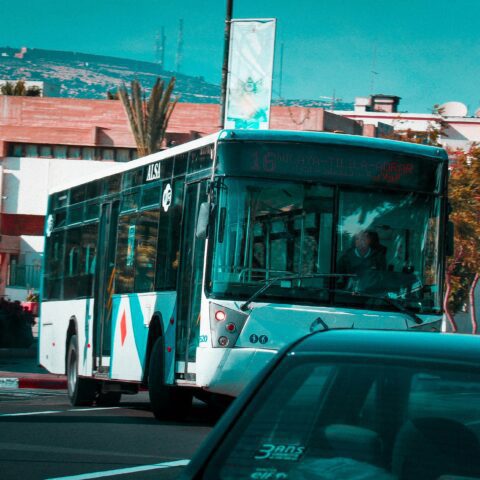Introduction to Green Mobility
Welcome to the world of green mobility, where sustainability meets transportation! In today’s fast-paced and ever-growing society, finding eco-friendly solutions for our daily commute has become more crucial than ever before. Green mobility is not just a buzzword anymore; it’s a necessity that can transform the way we travel and contribute towards a cleaner and greener future.
Picture this: bustling cities with zero-emission vehicles silently gliding through streets, seamlessly connected by efficient public transit systems, innovative bike-sharing programs, and smart mobility solutions. Sounds like a utopian dream? Well, it’s closer to reality than you might think!
In this blog post, we will explore the concept of green mobility in depth – from understanding its importance in combating climate change to examining various sustainable transportation options currently available. We’ll also dive into case studies showcasing successful implementation of these solutions while shedding light on the challenges that lie ahead.
So buckle up (or should I say pedal down?) as we embark on an exciting journey through the realm of green mobility. Whether you’re an environmental enthusiast or simply curious about alternative ways to get around town sustainably, this blog post has something for everyone. Let’s hit the road together and discover how we can make transportation both planet-friendly and convenient at the same time!
The Importance of Sustainable Transportation
The Importance of Sustainable Transportation
Transportation plays a crucial role in our daily lives, allowing us to commute, travel, and connect with others. However, the traditional modes of transportation heavily rely on fossil fuels, leading to pollution and environmental degradation. This is where sustainable transportation comes into play.
Sustainable transportation refers to any mode of transport that minimizes its impact on the environment while meeting our mobility needs. It encompasses various solutions such as electric vehicles (EVs), cycling infrastructure, public transit systems, and carpooling initiatives.
One major benefit of sustainable transportation is reducing greenhouse gas emissions. By shifting from conventional fuel-powered vehicles to EVs or hybrid cars, we can significantly decrease carbon dioxide emissions and combat climate change.
Moreover, investing in sustainable transportation means promoting healthier lifestyles for individuals and communities alike. Walking or biking instead of driving not only reduces air pollution but also encourages physical activity—a win-win situation!
Another advantage lies in enhancing energy efficiency. Electric trains or buses are more efficient than individual cars since they can transport a larger number of people using the same amount of energy.
Furthermore, adopting sustainable transportation contributes to economic growth by creating new job opportunities across industries like renewable energy production, public transit operations, and bike-sharing services.
Despite these advantages though there are some challenges associated with implementing green mobility solutions at scale. These include high upfront costs for infrastructural development (such as building charging stations for EVs) as well as resistance from individuals accustomed to traditional modes of transport.
In conclusion sustainability should be at the forefront when planning future urban development projects. By prioritizing green mobility solutions we can build cleaner healthier cities that meet both our present needs and those future generations yet unborn!
Types of Green Mobility Solutions
Green mobility solutions encompass a wide range of options that aim to reduce the environmental impact of transportation. These solutions utilize clean and renewable energy sources, promote sustainable modes of transport, and focus on improving efficiency.
One type of green mobility solution is electric vehicles (EVs). EVs are powered by electricity instead of fossil fuels, resulting in lower greenhouse gas emissions. They can be charged using renewable energy sources such as solar or wind power, making them even more environmentally friendly. Additionally, advancements in battery technology have led to increased driving ranges and faster charging times for EVs.
Another green mobility solution is public transportation systems. Well-designed and efficient public transport networks encourage people to use buses, trains, trams, or subways instead of private cars. By reducing the number of vehicles on the road, these systems help decrease congestion and air pollution levels in urban areas.
Bicycles also play a significant role in green mobility solutions. Cycling is not only an eco-friendly mode of transport but also promotes physical activity and improves overall health. Many cities around the world have implemented bike-sharing programs or built dedicated cycling lanes to encourage cycling as a viable alternative for short distance travel.
Additionally, carpooling and ridesharing services contribute to sustainable transportation by reducing the number of vehicles on the road. These services allow multiple passengers to share a single vehicle when traveling along similar routes. This not only reduces traffic congestion but also decreases fuel consumption and emissions per passenger.
Smart city initiatives leverage technology to optimize transportation systems for sustainability. This includes implementing intelligent traffic management systems that prioritize public transport or facilitate real-time navigation updates based on traffic conditions. Smart parking solutions also help reduce unnecessary circling around for parking spaces while emitting harmful pollutants.
By embracing these various types of green mobility solutions collectively or individually depending on specific requirements, we can work towards building more sustainable transportation networks globally.
Advantages and Disadvantages of Each Solution
Advantages and Disadvantages of Each Solution
When it comes to green mobility solutions, there are various options available, each with its own set of advantages and disadvantages. Let’s take a closer look at some of these solutions.
One popular option is electric vehicles (EVs). EVs have several advantages, including zero emissions, reduced dependence on fossil fuels, and lower operational costs compared to traditional gasoline-powered cars. Additionally, advances in battery technology have improved their range and charging infrastructure has become more accessible.
However, EVs also face challenges. The initial cost of purchasing an EV can be higher than that of a conventional vehicle. Charging infrastructure still needs further development to ensure convenience for all users. Additionally, the production and disposal processes for batteries raise environmental concerns.
Another sustainable transportation solution is public transportation systems such as buses or trains. These systems help reduce traffic congestion while lowering carbon emissions per passenger mile compared to private vehicles. They also provide affordable transportation options for individuals who cannot afford a car.
Nevertheless, public transport has certain drawbacks too. It may not always offer door-to-door service or the flexibility desired by some commuters. There can be issues with reliability or overcrowding during peak hours in heavily populated areas.
Bicycles are another eco-friendly alternative gaining popularity in cities worldwide. Biking offers numerous benefits such as improved health outcomes through physical activity and reduced traffic congestion since bikes require less space than cars.
However, cycling may not be suitable for everyone due to factors like age or physical limitations that prevent people from using this mode of transport extensively or at all times.
In recent years, ride-sharing services like Uber or Lyft have emerged as convenient alternatives to owning a car outright. These platforms allow individuals to share rides with others heading in the same direction which reduces overall vehicle usage and lowers carbon emissions.
On the downside though, ride-sharing services heavily rely on fuel-powered vehicles (although efforts are being made towards electrification) which means they still contribute to pollution. Additionally, there are concerns around safety and the fair
Case Studies: Successful Implementation of Green Mobility
Case Study 1: Barcelona’s Superblocks
One successful implementation of green mobility can be seen in the city of Barcelona, Spain. The concept of “superblocks” was introduced as a way to reclaim public space from cars and promote sustainable transportation options.
Barcelona transformed several city blocks into pedestrian-friendly zones where cars are limited, and walking, cycling, and public transport are prioritized. This initiative has not only reduced traffic congestion but also improved air quality and created safer streets for pedestrians.
Case Study 2: Curitiba’s Bus Rapid Transit System
Curitiba, Brazil is another prime example of a successfully implemented green mobility solution. The city pioneered the Bus Rapid Transit (BRT) system in the 1970s as an efficient alternative to traditional bus systems or costly subway networks.
The BRT system in Curitiba features dedicated lanes for buses, pre-paid boarding stations with level boarding platforms, and synchronized traffic signals. This has significantly reduced travel times and encouraged people to opt for public transportation instead of using their private vehicles.
Case Study 3: Copenhagen’s Cycling Infrastructure
Copenhagen, Denmark is often hailed as one of the most bike-friendly cities in the world. They have invested heavily in developing an extensive network of cycling infrastructure that includes dedicated lanes, bridges, tunnels, parking facilities, and cyclist-friendly traffic signals.
As a result of these efforts, more than half of all trips made by Copenhagen residents now occur on bicycles rather than cars or other forms of transport. This has led to reduced greenhouse gas emissions and improved overall health outcomes for citizens.
These case studies demonstrate that implementing green mobility solutions can have significant positive impacts on urban environments. By prioritizing sustainable transportation options such as pedestrian zones, efficient bus systems or robust cycling infrastructure – cities can reduce pollution levels while improving quality life for their residents
Challenges and Roadblocks in Adopting Sustainable Transportation
Challenges and Roadblocks in Adopting Sustainable Transportation
Transitioning to sustainable transportation systems is not without its challenges. One of the main roadblocks is the lack of infrastructure. Building a robust network of bike lanes, electric vehicle charging stations, and efficient public transportation routes requires significant investment and planning.
Another challenge lies in changing people’s mindset and behaviors. Many individuals are accustomed to using their personal vehicles for daily commute, which contributes to traffic congestion and air pollution. Encouraging them to switch to greener alternatives like cycling or carpooling can be met with resistance.
In addition, there may be financial barriers associated with adopting sustainable transportation solutions. Electric vehicles tend to have higher upfront costs compared to traditional gasoline-powered cars, making them less accessible for some consumers. Similarly, developing affordable and reliable public transport systems in rural areas can pose financial challenges.
Furthermore, political will plays a crucial role in driving the adoption of sustainable transportation measures. Policies need to be put into place that incentivize eco-friendly modes of travel while discouraging unsustainable practices such as single-occupancy vehicle use.
Technological advancements are necessary for overcoming hurdles related to range anxiety for electric vehicles or improving the efficiency of alternative fuels like hydrogen.
Despite these challenges, it’s important that we continue striving towards sustainable transportation solutions as they offer numerous benefits – from reducing greenhouse gas emissions and improving air quality to enhancing overall quality of life in our communities. With concerted efforts from individuals, businesses, governments, and organizations alike – we can overcome these obstacles together!
Future Outlook and Potential for Growth
Future Outlook and Potential for Growth
As we look ahead to the future, the potential for growth in green mobility is truly exciting. With increasing concerns about climate change and pollution, sustainable transportation solutions are gaining traction worldwide. Governments, businesses, and individuals are all recognizing the importance of reducing carbon emissions and embracing more environmentally friendly modes of transportation.
One area that holds great promise for the future is electric vehicles (EVs). The advancements in battery technology have made EVs more affordable and accessible than ever before. With improved charging infrastructure and longer range capabilities, EVs are becoming a viable option for many people. This trend is expected to continue as automakers invest heavily in research and development to further enhance EV technology.
Another area with significant growth potential is shared mobility services like ride-sharing platforms and bike-sharing programs. These innovative solutions not only reduce traffic congestion but also promote efficient use of resources by maximizing occupancy rates of vehicles. As these services become more widespread, they have the potential to revolutionize urban transportation systems.
Furthermore, advancements in autonomous vehicle technology are poised to reshape our transport landscape. Self-driving cars can optimize routes, minimize fuel consumption, and reduce accidents caused by human error. While there are still challenges to overcome before fully autonomous vehicles become commonplace on our roads, continued investment in research will undoubtedly lead us towards a future where self-driving cars dominate our highways.
In addition to technological advances, policy changes will play a crucial role in promoting sustainable transportation. Governments around the world are implementing regulations such as stricter emission standards or incentives for adopting clean energy alternatives. These policies create an enabling environment that encourages both individuals and businesses to embrace green mobility options.
The future outlook for green mobility looks promising with immense potential for growth across various sectors including electric vehicles, shared mobility services,and autonomous driving technologies.
The shift towards sustainable transportation solutions will not only help combat climate change but also create healthier cities with reduced air pollution levels.
It’s clear that this transition is not only necessary but also beneficial for the well-being of our planet and future
How Individuals Can Contribute to Green Mobility
How Individuals Can Contribute to Green Mobility
Now that we have explored the various types of green mobility solutions, their advantages and disadvantages, successful case studies, as well as the challenges and potential for growth in adopting sustainable transportation, it’s time to shift our focus on what individuals can do to contribute towards a greener future.
1. Opt for Eco-friendly Modes of Transportation:
One of the simplest ways individuals can contribute to green mobility is by choosing eco-friendly modes of transportation whenever possible. Instead of driving alone in a car, consider carpooling or using public transportation. For shorter distances, walking or cycling are excellent options that not only reduce emissions but also promote personal health and fitness.
2. Embrace Electric Vehicles (EVs):
The popularity of electric vehicles has been growing steadily over recent years due to advancements in technology and infrastructure support. By transitioning from traditional gasoline-powered cars to EVs, individuals can significantly reduce their carbon footprint and dependence on fossil fuels.
3. Support Sustainable Infrastructure:
Encouraging governments and local authorities to invest in sustainable infrastructure is another way individuals can make a difference. This includes advocating for better public transportation systems, bike lanes, charging stations for electric vehicles, and pedestrian-friendly streets.
4. Practice Responsible Driving Habits:
Adopting responsible driving habits such as avoiding aggressive acceleration or braking not only improves fuel efficiency but also reduces emissions. Regular vehicle maintenance like keeping tires properly inflated and getting regular tune-ups ensures optimal performance while minimizing environmental impact.
5. Educate Others:
Spreading awareness about the importance of green mobility is crucial in creating a collective mindset towards sustainability. Encourage friends, family members, coworkers, and community members to embrace eco-friendly transportation options through discussions or by sharing informative resources.
6. Support Local Initiatives:
Get involved with local organizations working towards promoting green mobility solutions within your community – whether it’s volunteering at events focused on sustainable transport or supporting campaigns aimed at improving bike infrastructure. By actively participating, you can help drive change at a grassroots level.







